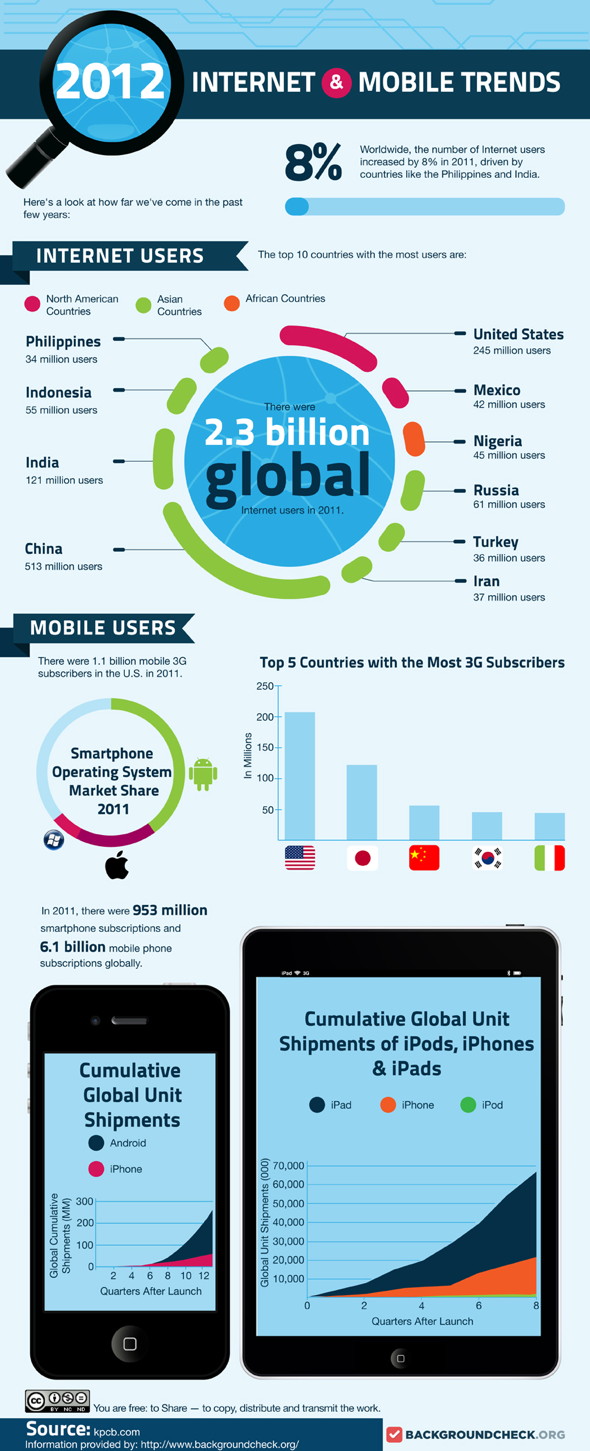Mobile is maturing. The only question is "In which way…?"
Are we not all awaiting the “Year of Mobile”? Obviously, tablets and smartphones have made it become more sophisticated. However, most marketers still do not know how to approach this evolution from a strategic perspective. Understanding the bigger picture seems to become a leadership task. Who is using mobile tools on a daily basis? What are mobile business goals? Why do our employees need mobile and BYOD? Why is there an opportunity in using mobile to speed up business processes?
A new study by Compete describes for example who “Primary mobile users” on Twitter are. 57% are less likely to log into Twitter from their desktop than the average Twitter user. They check their updates and tweets more frequently than most other users. With 86% they are more likely to be active on Twitter several times a day than the average user. Smartphone apps are their entry point. However, 15% of the Primary mobile users” work on Twitter via their tablets predominantly.

Furthermore, Mutual Mobile have created an interesting infographic which might offer some more insights, why enterprise mobility is essential for business development, where processes might get more impact through mobile, and how a company’s ROI might get the right boost with mobile.
Looking at the stats, it becomes obvious that the mobile priority increases with Chief Technology Officers (CTO), apart from dedicating greater resources to the mobile evolution when 94% of CTOs believe enterprise mobility will be important. Furthermore, 67% see mobile having more impact than the Internet did in the 1990s. Most important from an employees outlook is the fact that 65% understand more mobile support for employees as a critical priority.
Each and every business decision maker should see that mobile business leverages employees’ productivity (2X), quadruples margins and decreases customer churn by 20%. Private and business users are getting more and more engaged in mobile Internet activities. Mobile is maturing, the infographic states. Would you agree? And if so, do you have some more arguments why…?





 While Facebook turns more and more to search and ad exchange budgets, Google is still riding the mobile wave. In many moderations over the last two years, I could listen to their attitude towards building mobile websites, and why these are important to the business of the future. However, companies often resist to face the mobile evolution and still stick to their conventional desktop websites. Not to mention what this does to their brands when the user experience is driving into a nightmare of usability and readability.
While Facebook turns more and more to search and ad exchange budgets, Google is still riding the mobile wave. In many moderations over the last two years, I could listen to their attitude towards building mobile websites, and why these are important to the business of the future. However, companies often resist to face the mobile evolution and still stick to their conventional desktop websites. Not to mention what this does to their brands when the user experience is driving into a nightmare of usability and readability.
 We have already shared some information on a
We have already shared some information on a